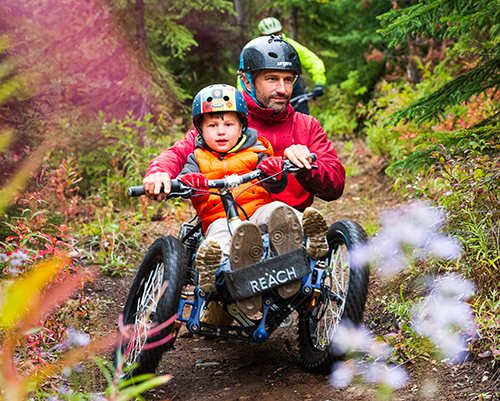
Welcome to New Mobility’s biweekly newsletter. To receive via email (mobile-friendly), subscribe here.
NEWS
Access for Disabled Travelers Finally on Airlines’ Radar
While your last experience with an aisle chair may tell you otherwise, the world’s airlines are slowly waking up to the fact that disabled passengers are a major and increasingly valuable segment of their customer base. At the industry’s recent annual meeting, air carriers committed to improving the travel experience for disabled passengers and reducing the number of damaged wheelchairs and mobility devices.
TRENDING
How to Un-Turtle Yourself
Falling over is kind of a given if you live an active life as a wheelchair user. And while getting back up depends a lot on function and situation, you may have more options than you realize. Check out this one-minute video of a quad flipping himself upright from his back, all without getting out of his wheelchair. Impressive.
PRO TIPS
Handcycle Heaven
How do you open up some of the most inaccessible terrain in the world? Start with innovative leaning technology, add a fat tire and a 3,000 watt motor, and the rest is up to you. Seth McBride profiles Christian Bagg and his next-level handcycle, the Bowhead Reach. “Now all of a sudden I can lean into corners,” McBride says. “I can accommodate side slopes. It’s doing everything I want it to do.”
Popular UTI Antibiotics and Tendon Rupture
An expanding body of research is showing that popular, broad-spectrum UTI antibiotics like Cipro may put you at an elevated risk of tendonitis and tendon rupture. For wheelchair users trying to keep their shoulders and other joints healthy, that’s a major red flag. We look at the details and alternative options — from getting a culture-specific antibiotic, to using an irrigant solution or supplements like D-Mannose to reduce your risk of an getting an infection in the first place.
3D Technology in SCI Repair
To date, the most impressive gains for functional recovery from SCI have come from implanted electrodes, but a 3D printer may hold the key to true regeneration. Recently researchers used custom, 3D-printed scaffolds and cellular therapy to help nerve fibers to regrow across an injury site. The technique is designed to accommodate a person’s unique injury, and if researchers are able to successfully move from animal to human tests, the implications could be huge.
Receive New Mobility’s newsletter in your inbox, cleverly formatted for mobile devices. Subscribe.
** This post was originally published on http://www.newmobility.com/2019/07/newsletter79/

